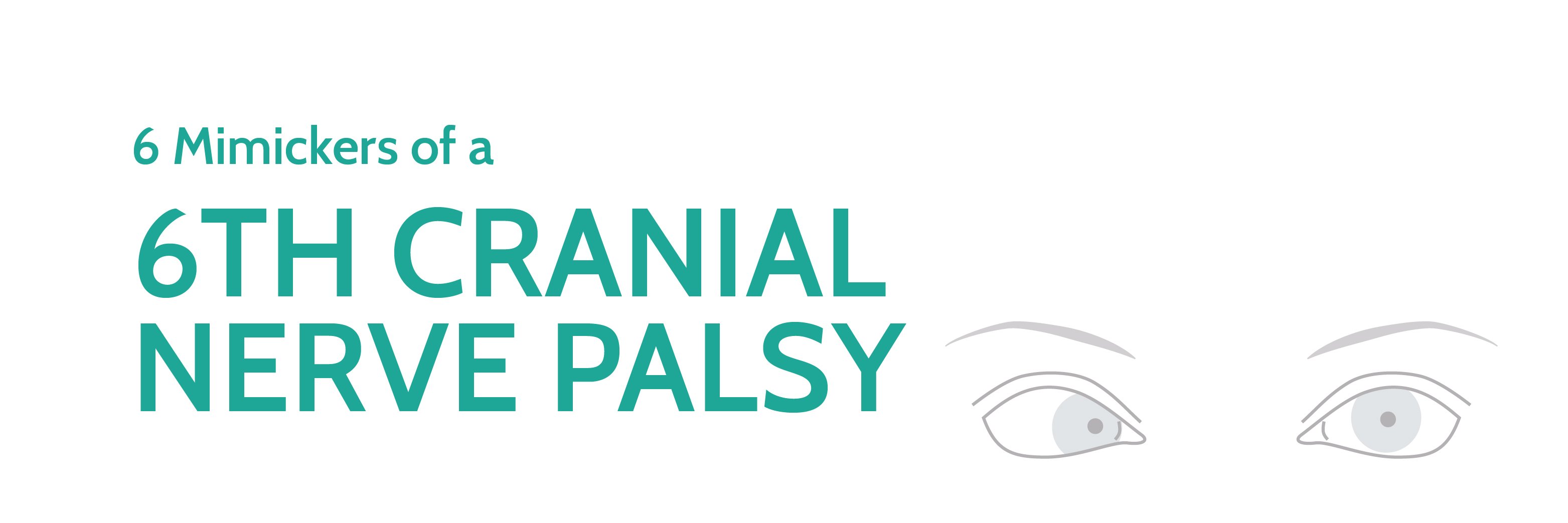The abducens nerve (6th cranial nerve) controls a single extraocular muscle; the lateral rectus. The lateral rectus is primarily responsible for abducting the eye. A palsy of the abducens nerve is the most common ocular motor paralysis; the affected eye turns inward toward the nose and is unable to abduct properly.
The deviation is constant and is typically greater at distance fixation than at near. The esotropia is also more noticeable when the patient is looking toward the affected side. Diagnosis of a 6th cranial nerve palsy may seem pretty straight forward when piecing together the patient’s history and examination findings; however, you should keep in mind that there are several conditions that may imitate isolated lateral rectus weakness.
We will review these 6 mimickers of a 6th nerve palsy for your review!


